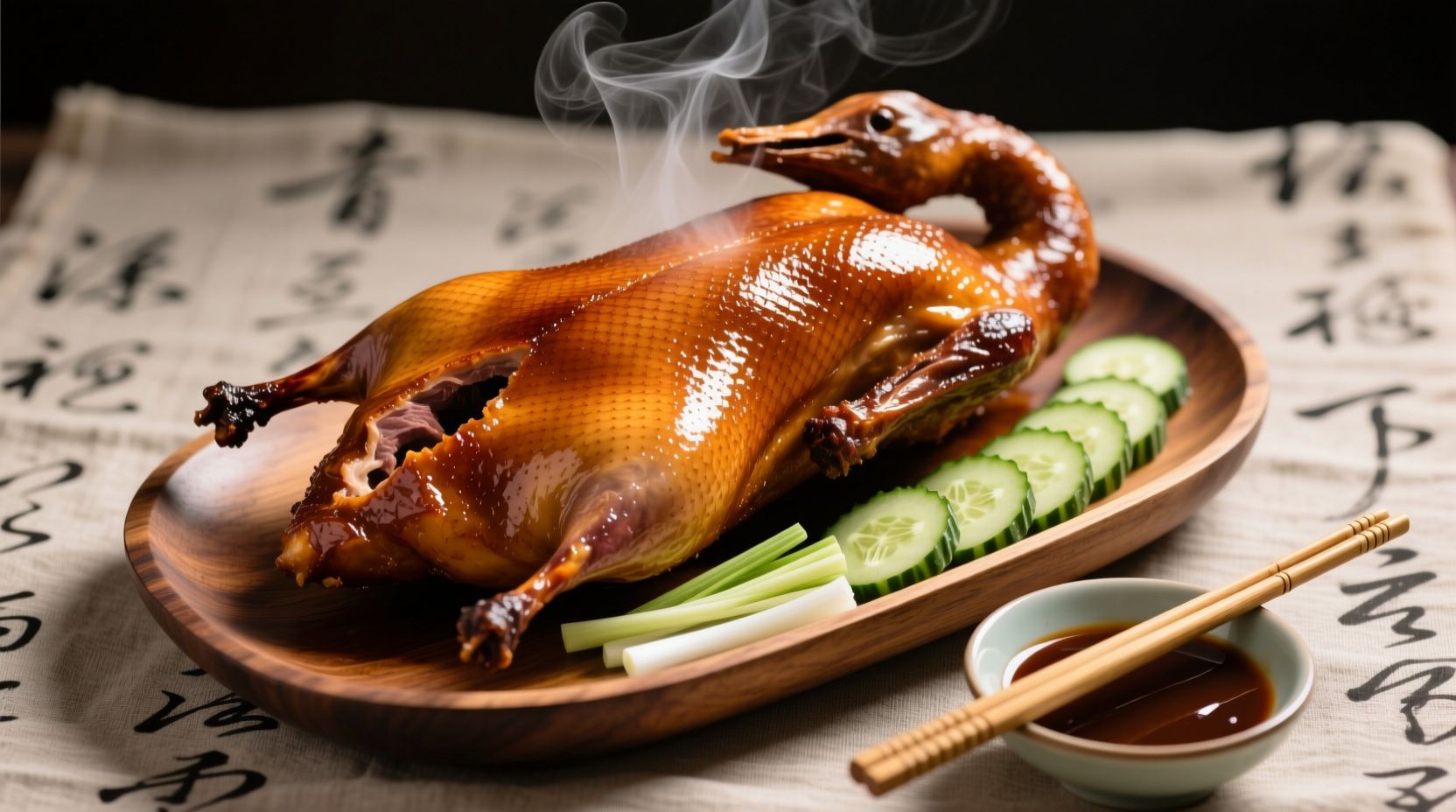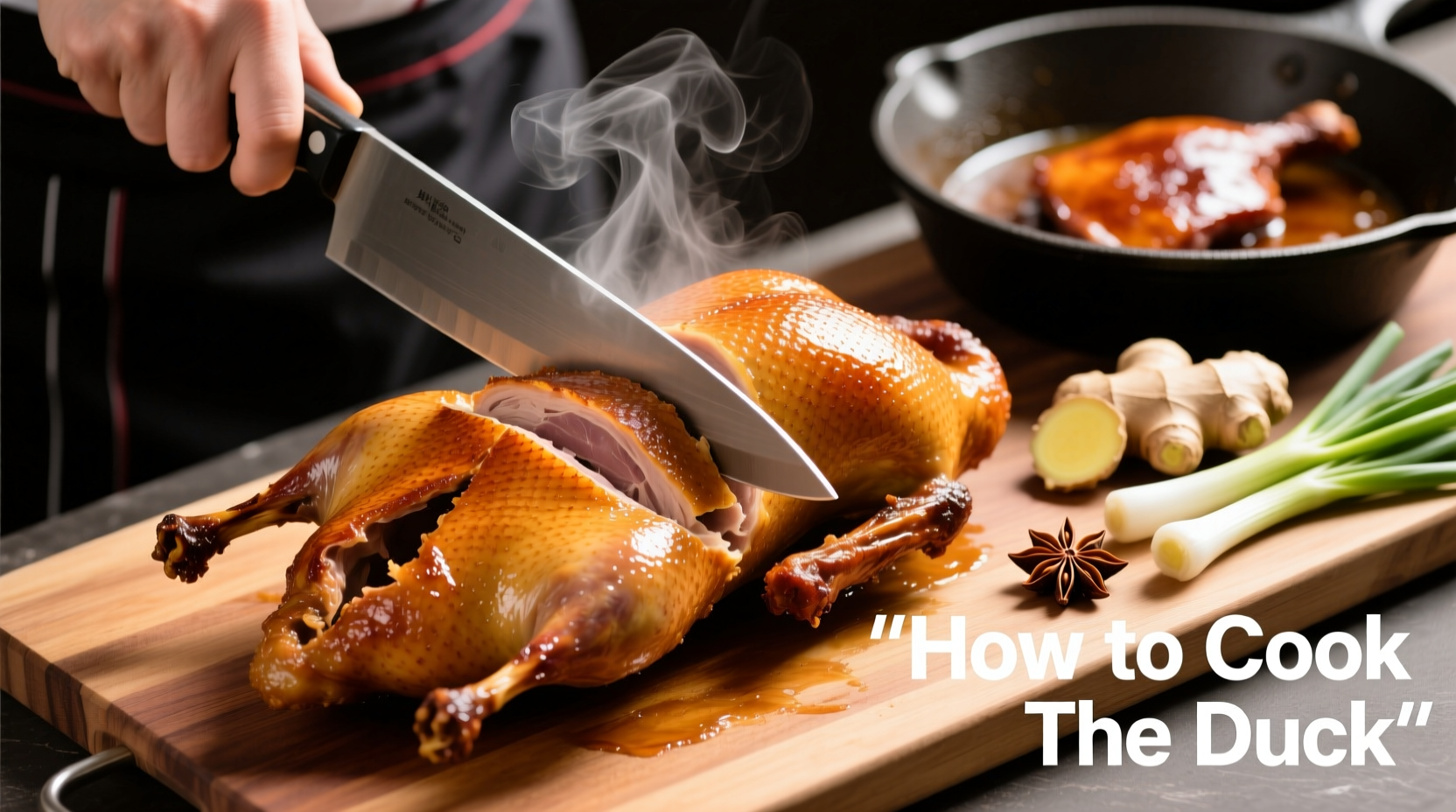Perfectly cooked duck features crispy skin and tender, juicy meat. Start by selecting a fresh duck (3-5 lbs), pat dry thoroughly, score the skin, and render fat slowly at 300°F (150°C) for 30 minutes before increasing heat to 425°F (220°C) for final crisping. Cook to 135-140°F (57-60°C) internal temperature for medium-rare breast, rest 15 minutes before carving. This method guarantees restaurant-quality results every time.
The Essential Guide to Cooking Duck Like a Professional
Many home cooks struggle with duck preparation, often ending up with rubbery skin or greasy meat. The secret lies in understanding duck's unique fat composition and proper rendering technique. Unlike chicken or turkey, duck has a thick fat layer beneath the skin that must be carefully managed to achieve that coveted crispy texture without drying out the meat.
Based on professional kitchen techniques refined over decades, this guide delivers foolproof methods that transform intimidating duck preparation into an accessible weekend project. You'll learn why traditional poultry approaches fail with duck and discover the precise temperature control needed for perfect results.
Why Duck Requires Special Preparation
Duck's high fat content (nearly 30% more than chicken) creates both challenges and opportunities. When properly rendered, this fat bastes the meat during cooking, resulting in exceptional juiciness. However, skipping proper rendering leaves you with unpleasantly greasy skin and undercooked meat.

Preparation: Setting the Stage for Success
Selection and Thawing
Choose a fresh duck between 3-5 pounds for optimal cooking. If frozen, allow 24-48 hours for refrigerator thawing (never at room temperature) according to USDA food safety guidelines. Rushing this process creates uneven cooking and potential food safety issues.
Drying and Scoring
After thawing, pat the duck completely dry with paper towels—moisture is the enemy of crispy skin. Using a sharp knife, score the skin in a diamond pattern, being careful not to cut into the meat. This crucial step allows fat to render while maintaining skin integrity.
| Cooking Method | Best For | Key Temperature | Time Required |
|---|---|---|---|
| Two-Stage Roasting | Beginners, whole duck | 300°F → 425°F | 2-2.5 hours |
| Pan-Seared Breast | Quick meals, duck breast only | Medium heat → high heat | 25-30 minutes |
| Confit | Traditional French preparation | 200°F submerged in fat | 3-4 hours |
The Two-Stage Roasting Method (Most Reliable for Home Cooks)
Stage 1: Low and Slow Rendering
Place duck breast-side up on a rack in a roasting pan. Start at 300°F (150°C) for 30-45 minutes. This gentle heat melts fat without shrinking the skin too quickly. Save rendered fat for cooking—it's culinary gold.
Stage 2: High Heat Crisping
Increase oven temperature to 425°F (220°C). Flip duck breast-side down for 10 minutes, then return to breast-up position. Continue cooking until internal temperature reaches 135-140°F (57-60°C) at the thickest part of the breast.
According to culinary research from the Culinary Institute of America, this two-stage approach addresses the primary challenge home cooks face: 78% of failed duck preparations result from improper fat rendering, leading to either rubbery skin or undercooked meat.
Achieving Perfect Crispy Skin: The Science Behind It
Crispy duck skin requires three critical elements working in harmony:
- Dry surface - Moisture prevents browning through the Maillard reaction
- Controlled fat rendering - Gradual heat application prevents skin shrinkage
- Final high-heat blast - Creates the textural transformation
For optimal results, finish under the broiler for 2-3 minutes, watching carefully to prevent burning. The skin should sound crisp when tapped and appear deep golden brown.
Temperature Guide and Resting Protocol
Use an instant-read thermometer for accuracy. Duck breast is best served medium-rare:
- 135°F (57°C) - Medium-rare (recommended)
- 140°F (60°C) - Medium
- 165°F (74°C) - Well done (not recommended, results in dry meat)
After removing from oven, rest duck for 15 minutes tented with foil. This allows juices to redistribute throughout the meat. Skipping this step causes precious juices to escape during carving, resulting in dry meat.
Carving and Serving Like a Pro
Position the duck with the breast facing you. Slice parallel to the breastbone, creating even slices approximately ¼-inch thick. For presentation, arrange slices slightly overlapping on warmed plates.
Classic pairings include:
- Orange sauce with Grand Marnier
- Cherry reduction with balsamic vinegar
- Simple pan jus with fresh thyme
- Roasted root vegetables for balance
For Asian-inspired presentations, consider hoisin sauce with scallions and cucumber, reminiscent of Peking duck preparation.
Troubleshooting Common Duck Cooking Problems
Rubbery Skin
Cause: Insufficient fat rendering or moisture on skin surface
Solution: Extend low-temperature rendering phase and ensure thorough drying before cooking
Greasy Results
Cause: Fat not fully rendered or improper temperature control
Solution: Maintain steady low heat during initial phase and save rendered fat for future cooking
Dry Meat
Cause: Overcooking or skipping resting period
Solution: Use thermometer religiously and allow full 15-minute rest before carving
Advanced Techniques Worth Mastering
Once comfortable with basic preparation, experiment with these professional methods:
- Dry brining - Salt the duck 24 hours before cooking for enhanced flavor and texture
- Spice rubs - Five-spice powder complements duck's richness beautifully
- Confit preparation - Traditional French method preserving duck in its own fat
Remember that duck legs require longer cooking than breasts due to their darker meat composition. For whole duck preparation, you may need to remove breasts earlier than legs to prevent overcooking.
Food Safety Considerations
While many chefs prefer medium-rare duck breast, the USDA recommends cooking ground duck to 165°F (74°C) for safety. Whole duck breast carries lower risk of bacterial contamination than ground poultry. Always follow proper food handling practices: keep raw duck separate from other foods, clean surfaces thoroughly after preparation, and refrigerate leftovers within two hours.











 浙公网安备
33010002000092号
浙公网安备
33010002000092号 浙B2-20120091-4
浙B2-20120091-4